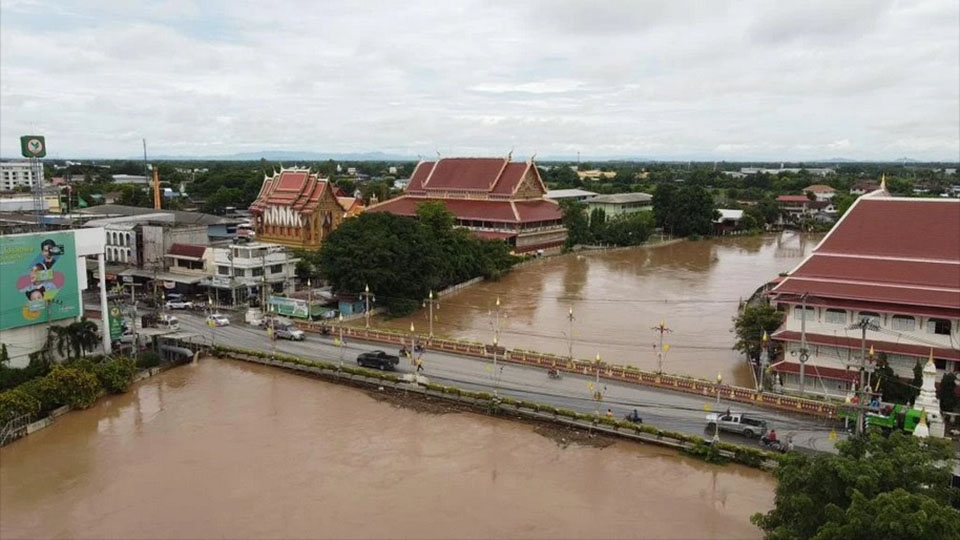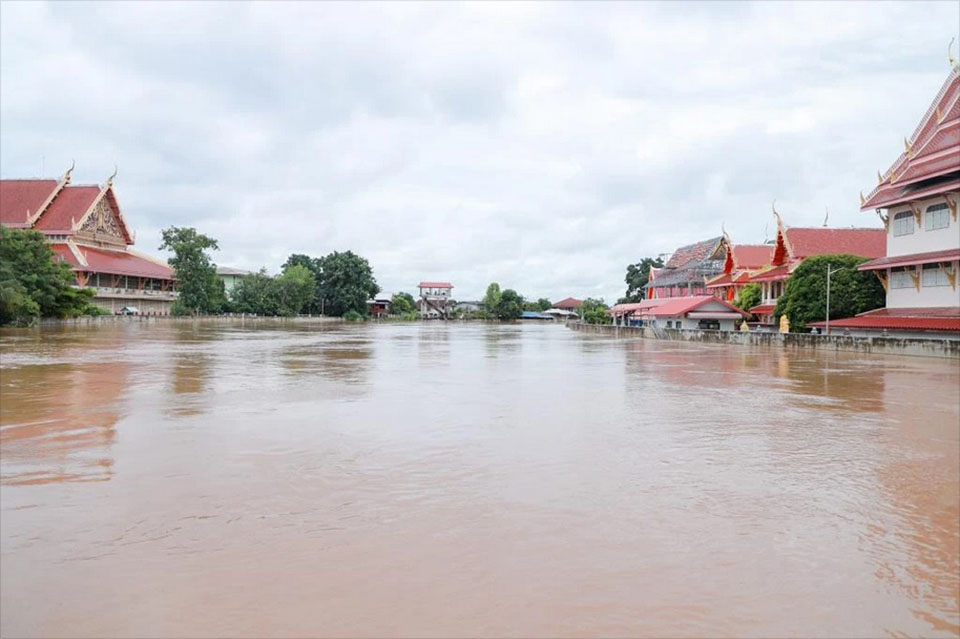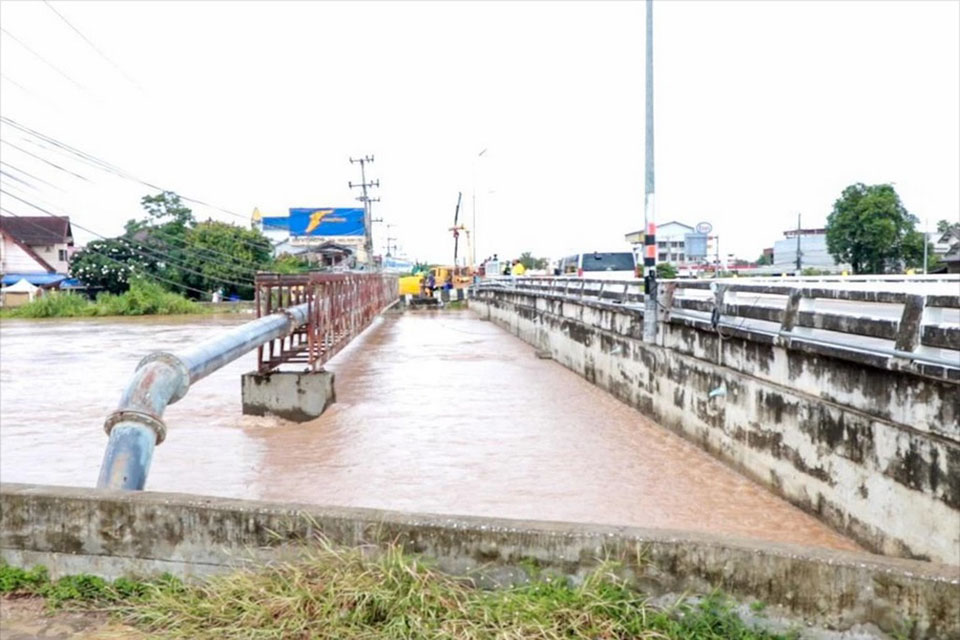
SUKHOTHAI, Thailand – As of August 23, northern Thailand’s Yom River Basin is under urgent flood alerts due to a significant mass of water flowing from Phrae Province toward Sukhothai Province. Earlier this morning, water levels in Phrae peaked at 1,500 cubic meters per second, surpassing the area’s capacity of 1,000 cubic meters per second, causing severe flooding in the city.
The water is expected to continue downstream, reaching Sukhothai’s Si Satchanalai and Sawankhalok districts by the morning of August 24 at a flow rate of 1,300-1,400 cubic meters per second. This poses a serious threat to Sukhothai, as its river system has a maximum capacity of only 800 cubic meters per second in many areas and as little as 500 cubic meters per second in the narrowest parts.
Vattanask Supaking, Director of the Water Resources Technology Division at the Institute of Water Resources Information (IWRI), explained that attempts to mitigate the impact by diverting water at Had Saphan Chan Watergate will provide limited relief. The water diversion systems can only manage around 150-200 cubic meters per second, far short of the incoming flow from Phrae.
The situation is further complicated by forecasted rainfall in the northern region, expected to last until August 25. This additional rain could slow water discharge and exacerbate flooding risks.
Authorities have set up a frontline operations center in Sukhothai and are working to manage water flow, especially through the province’s tributaries. Efforts are focused on preventing water from flooding essential infrastructure, such as the Sukhothai Hospital, as occurred in 2021. The situation is being closely monitored, and early warnings are being issued to residents along the Yom River as the water moves downstream.










